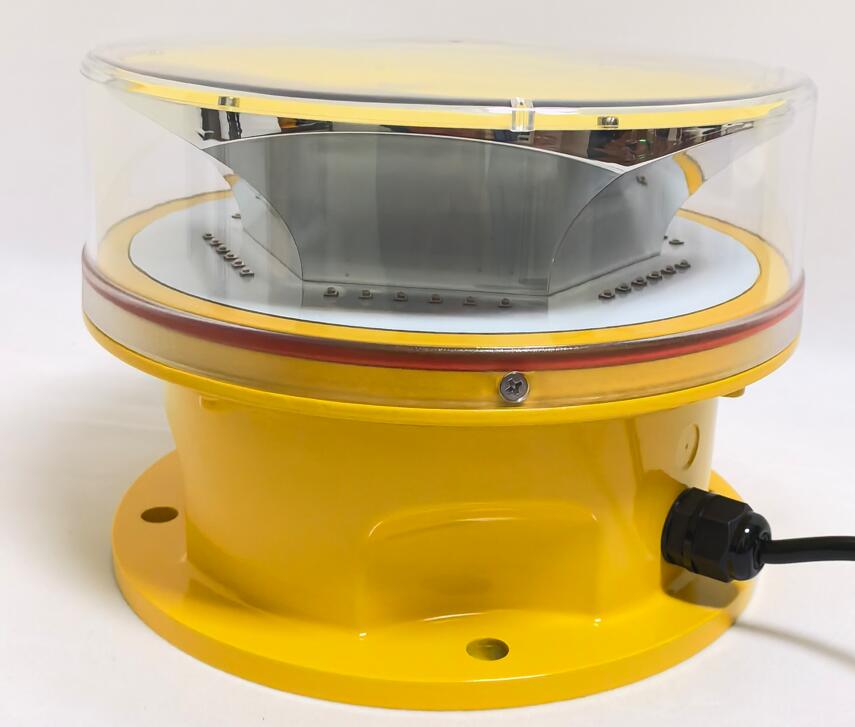Posted: 2025-03-19
In the vast and complex world of aviation, safety is paramount. One of the key elements ensuring this safety is the use of FAA red obstruction lights. These lights are not just simple markers; they are vital tools that help prevent collisions and guide pilots safely through the skies. This article delves into the importance, functionality, and applications of FAA red obstruction lights, highlighting their indispensable role in modern aviation.
Understanding FAA Red Obstruction Lights
FAA red obstruction lights are specialized lighting systems designed to mark tall structures that could pose a hazard to aircraft. These structures include buildings, towers, cranes, and other obstacles that extend into navigable airspace. The Federal Aviation Administration (FAA) mandates the use of these lights to ensure that pilots can easily identify and avoid such obstacles, especially during nighttime or in low-visibility conditions.
The primary purpose of FAA red obstruction lights is to enhance visibility. They emit a steady or flashing red light, which is easily distinguishable from other light sources. This helps pilots maintain situational awareness and navigate safely around potential hazards.
The Importance of FAA Red Obstruction Lights in Aviation Safety
The skies are becoming increasingly crowded with aircraft, drones, and other flying objects. This congestion heightens the risk of collisions, making it essential to have clear and reliable markers for obstacles. FAA red obstruction lights play a crucial role in mitigating this risk by providing a consistent and recognizable signal to pilots.

One of the key benefits of these lights is their ability to function in various weather conditions. Whether it's fog, rain, or snow, FAA red obstruction lights remain visible, ensuring that pilots can always identify potential hazards. This reliability is critical in maintaining the safety and efficiency of air travel.
Moreover, these lights are not just for the benefit of commercial aviation. They also protect general aviation, including private planes and helicopters, which often fly at lower altitudes and are more likely to encounter tall structures.
| faa red obstruction lights |
Applications of FAA Red Obstruction Lights
FAA red obstruction lights are used in a wide range of applications, each critical to ensuring aviation safety:
Urban High-Rise Buildings: In cities with towering skyscrapers, FAA red obstruction lights are installed on the rooftops to mark the buildings' height. This is especially important in densely populated areas where the risk of collision is higher.
| faa red obstruction light |
Communication Towers: Telecommunication and broadcast towers are often located in remote areas but can reach significant heights. FAA red obstruction lights ensure these structures are visible to aircraft flying over rural or less populated regions.
Wind Turbines: As wind farms become more common, the need to mark these tall structures has grown. FAA red obstruction lights are used on wind turbines to prevent collisions, particularly in areas with high aviation activity.
Construction Cranes: Temporary structures like tower cranes used in construction projects must also be marked. FAA red obstruction lights provide a reliable solution for ensuring these cranes are visible to pilots.
Bridges and Power Lines: Tall bridges and high-voltage power lines can also pose risks to low-flying aircraft. Installing FAA red obstruction lights on these structures helps mitigate these risks.
Advantages of FAA Red Obstruction Lights
Compliance with Regulations: Using FAA red obstruction lights ensures compliance with FAA and International Civil Aviation Organization (ICAO) regulations. This not only enhances safety but also helps avoid legal issues and potential fines.
Energy Efficiency: Modern FAA red obstruction lights are designed to be energy-efficient, often utilizing LED technology. This reduces power consumption and operational costs while maintaining high visibility.
Durability and Low Maintenance: These lights are built to withstand harsh environmental conditions, including extreme temperatures, high winds, and heavy precipitation. Their robust design ensures long-term reliability with minimal maintenance.
Customizability: FAA red obstruction lights come in various configurations, including steady-burning, flashing, and dual-light systems. This allows for customization based on the specific requirements of the structure and its location.
Challenges and Future Innovations
While FAA red obstruction lights are highly effective, they are not without challenges. One of the primary concerns is ensuring consistent visibility in all conditions. Advances in lighting technology, such as brighter and more efficient LEDs, are addressing this issue by providing even greater visibility.
Another area of innovation is the integration of smart technologies. Future FAA red obstruction lights may incorporate sensors and connectivity features to enable real-time monitoring and remote control. This would allow for proactive maintenance and ensure continuous compliance with safety regulations.
Additionally, there is ongoing research into alternative power sources, such as solar energy, to make these lights even more sustainable and cost-effective. Solar-powered FAA red obstruction lights could be particularly beneficial in remote locations where access to the electrical grid is limited.
FAA red obstruction lights are a cornerstone of aviation safety, providing essential visibility for tall structures and helping to prevent collisions. Their importance cannot be overstated, as they play a critical role in protecting both commercial and general aviation. With advancements in technology and a focus on sustainability, these lights will continue to evolve, ensuring that they remain effective and reliable in an ever-changing aviation landscape. Whether marking a skyscraper in a bustling city or a wind turbine in a remote field, FAA red obstruction lights are guiding the skies and keeping air travel safe for all.